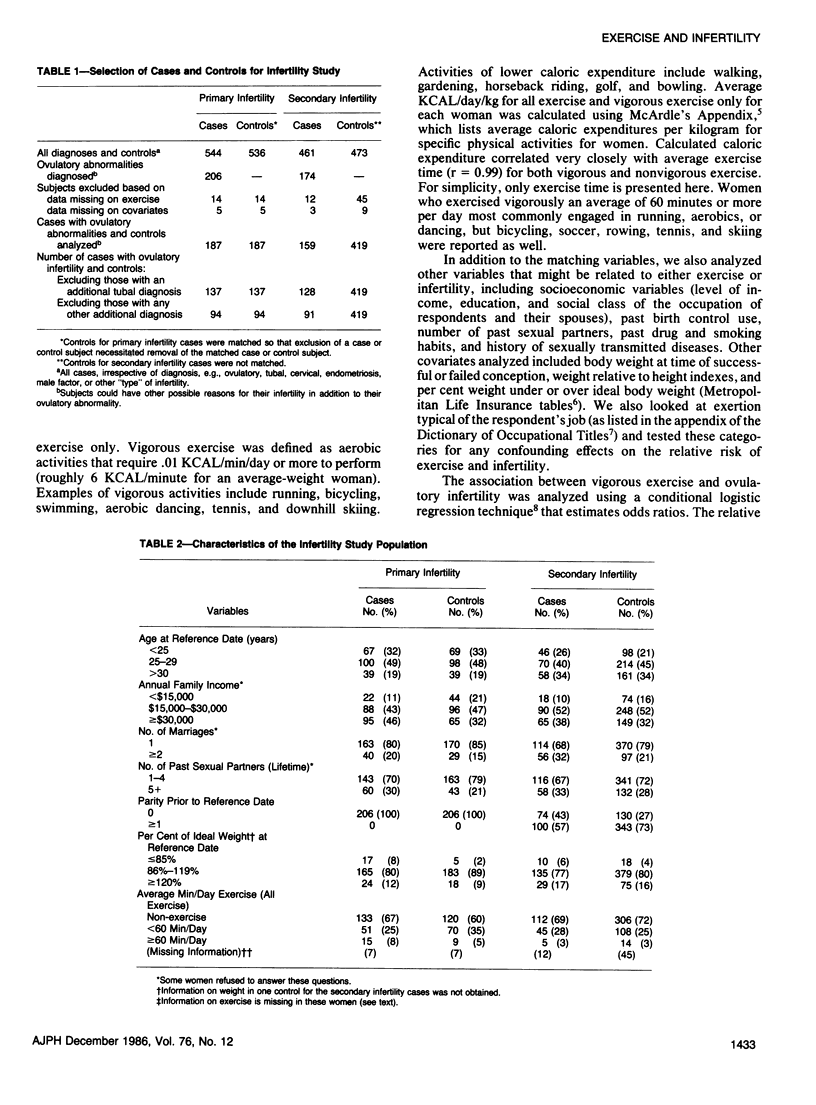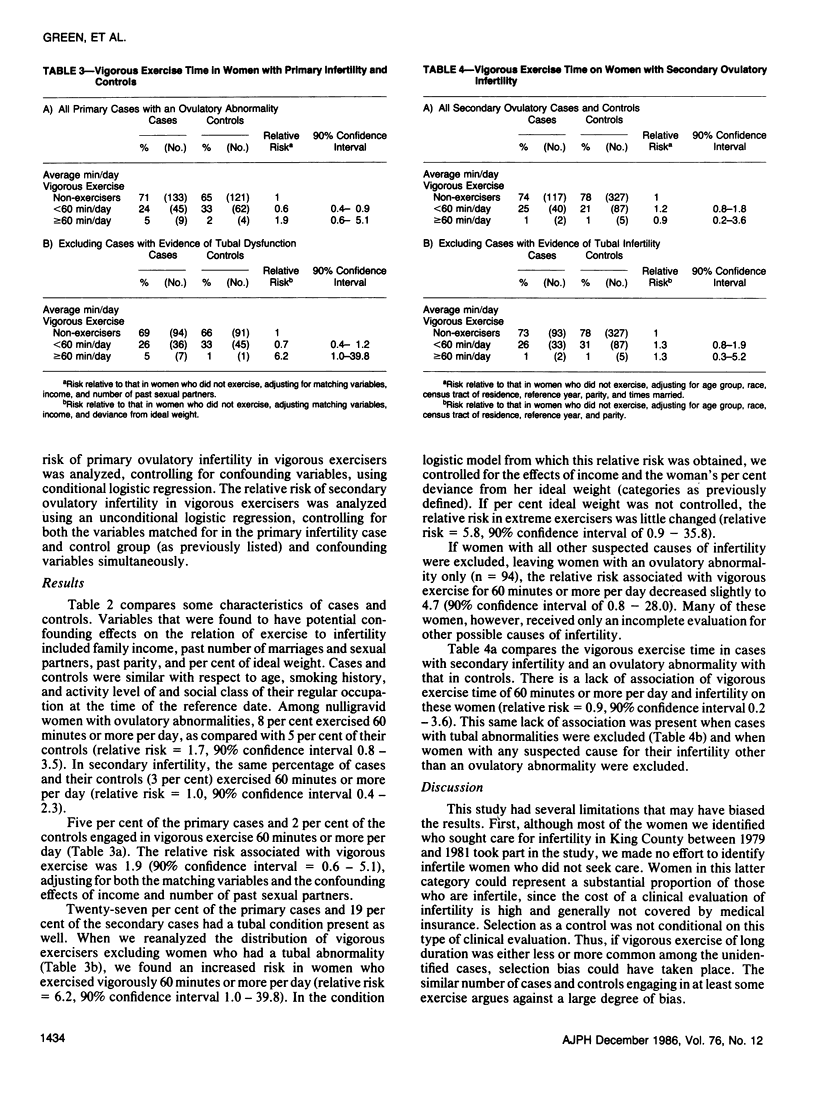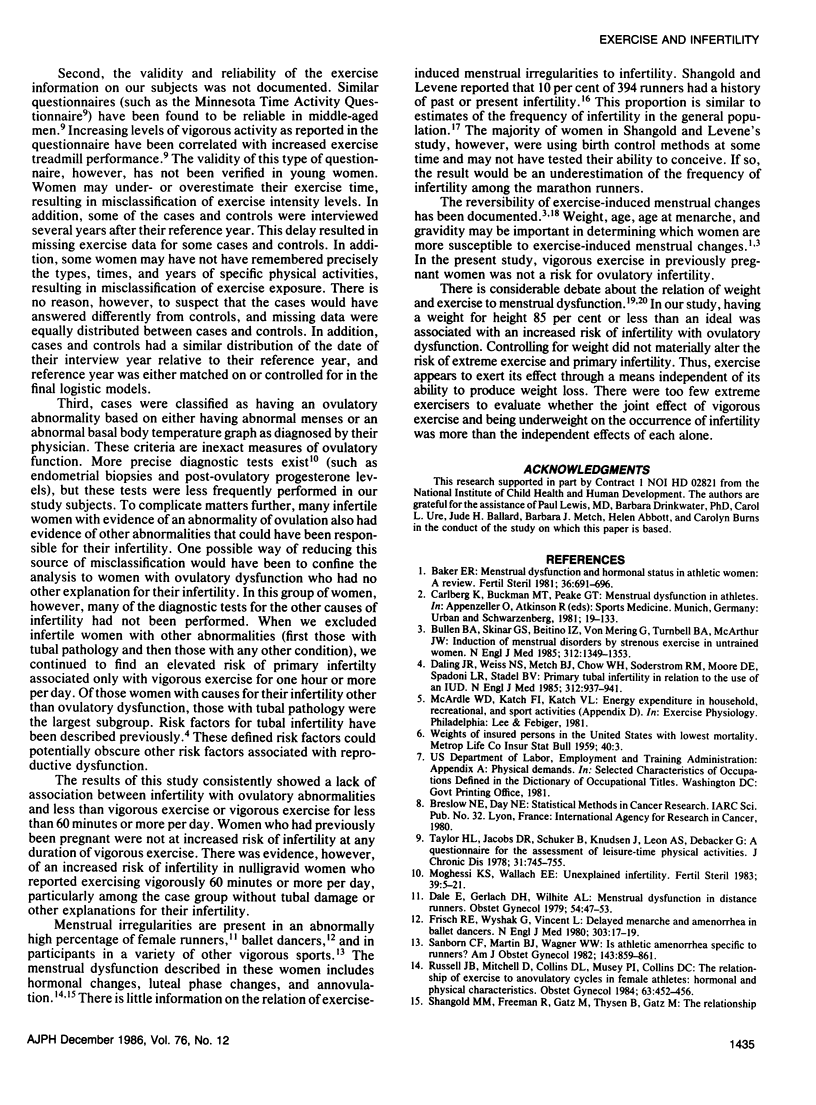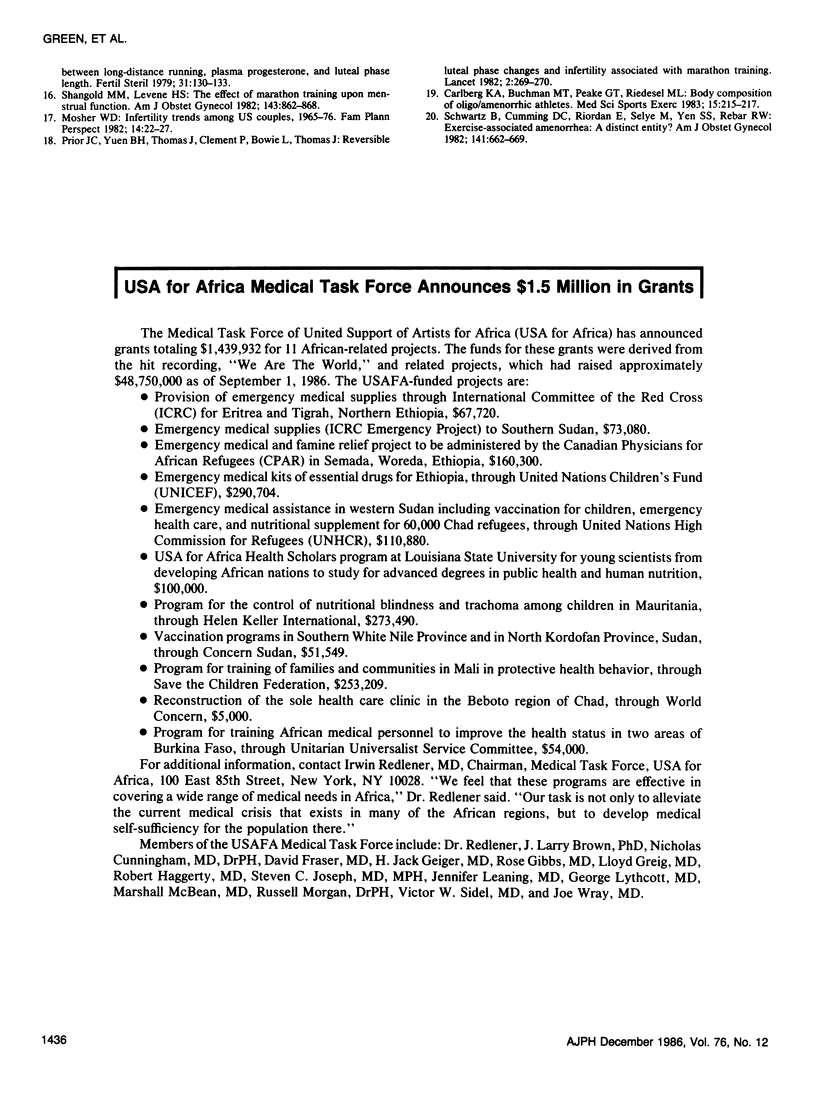Abstract
To examine the relation of regular vigorous exercise to ovulatory infertility, we interviewed 346 infertile women, in whom there was evidence of ovulatory failure, regarding their exercise patterns during the year preceding their unsuccessful effort to conceive. Their responses were compared with similar exercise histories in women who had successfully conceived at the time the infertile women started trying to become pregnant. Vigorous exercise for an hour or more per day was reported more commonly in nulligravid cases (n = 187) than by their primiparous controls. The difference was particularly great in the subgroup of cases without additional evidence of tubal dysfunction (relative risk = 6.2, 90% confidence interval = 1.0 - 39.8). This association was not seen among infertile women who had previously been pregnant. Vigorous exercise for an average of less than one hour per day was not associated with either primary or secondary infertility.
Full text
PDF




Selected References
These references are in PubMed. This may not be the complete list of references from this article.
- Baker E. R. Menstrual dysfunction and hormonal status in athletic women: a review. Fertil Steril. 1981 Dec;36(6):691–696. doi: 10.1016/s0015-0282(16)45908-x. [DOI] [PubMed] [Google Scholar]
- Bullen B. A., Skrinar G. S., Beitins I. Z., von Mering G., Turnbull B. A., McArthur J. W. Induction of menstrual disorders by strenuous exercise in untrained women. N Engl J Med. 1985 May 23;312(21):1349–1353. doi: 10.1056/NEJM198505233122103. [DOI] [PubMed] [Google Scholar]
- Carlberg K. A., Buckman M. T., Peake G. T., Riedesel M. L. Body composition of oligo/amenorrheic athletes. Med Sci Sports Exerc. 1983;15(3):215–217. [PubMed] [Google Scholar]
- Dale E., Gerlach D. H., Wilhite A. L. Menstrual dysfunction in distance runners. Obstet Gynecol. 1979 Jul;54(1):47–53. doi: 10.1097/00006250-197907000-00013. [DOI] [PubMed] [Google Scholar]
- Daling J. R., Weiss N. S., Metch B. J., Chow W. H., Soderstrom R. M., Moore D. E., Spadoni L. R., Stadel B. V. Primary tubal infertility in relation to the use of an intrauterine device. N Engl J Med. 1985 Apr 11;312(15):937–941. doi: 10.1056/NEJM198504113121501. [DOI] [PubMed] [Google Scholar]
- Frisch R. E., Wyshak G., Vincent L. Delayed menarche and amenorrhea in ballet dancers. N Engl J Med. 1980 Jul 3;303(1):17–19. doi: 10.1056/NEJM198007033030105. [DOI] [PubMed] [Google Scholar]
- Moghissi K. S., Wallach E. E. Unexplained infertility. Fertil Steril. 1983 Jan;39(1):5–21. doi: 10.1016/s0015-0282(16)46750-6. [DOI] [PubMed] [Google Scholar]
- Mosher W. D. Infertility trends among U.S. couples: 1965-1976. Fam Plann Perspect. 1982 Jan-Feb;14(1):22–27. [PubMed] [Google Scholar]
- Prior J. C., Yuen B. H., Clement P., Bowie L., Thomas J. Reversible luteal phase changes and infertility associated with marathon training. Lancet. 1982 Jul 31;2(8292):269–270. doi: 10.1016/s0140-6736(82)90348-8. [DOI] [PubMed] [Google Scholar]
- Russell J. B., Mitchell D., Musey P. I., Collins D. C. The relationship of exercise to anovulatory cycles in female athletes: hormonal and physical characteristics. Obstet Gynecol. 1984 Apr;63(4):452–456. [PubMed] [Google Scholar]
- Sanborn C. F., Martin B. J., Wagner W. W., Jr Is athletic amenorrhea specific to runners? Am J Obstet Gynecol. 1982 Aug 15;143(8):859–861. doi: 10.1016/0002-9378(82)90463-x. [DOI] [PubMed] [Google Scholar]
- Schwartz B., Cumming D. C., Riordan E., Selye M., Yen S. S., Rebar R. W. Exercise-associated amenorrhea: a distinct entity? Am J Obstet Gynecol. 1981 Nov 15;141(6):662–670. doi: 10.1016/s0002-9378(15)33308-1. [DOI] [PubMed] [Google Scholar]
- Shangold M. M., Levine H. S. The effect of marathon training upon menstrual function. Am J Obstet Gynecol. 1982 Aug 15;143(8):862–869. doi: 10.1016/0002-9378(82)90464-1. [DOI] [PubMed] [Google Scholar]
- Shangold M., Freeman R., Thysen B., Gatz M. The relationship between long-distance running, plasma progesterone, and luteal phase length. Fertil Steril. 1979 Feb;31(2):130–133. doi: 10.1016/s0015-0282(16)43811-2. [DOI] [PubMed] [Google Scholar]
- Taylor H. L., Jacobs D. R., Jr, Schucker B., Knudsen J., Leon A. S., Debacker G. A questionnaire for the assessment of leisure time physical activities. J Chronic Dis. 1978;31(12):741–755. doi: 10.1016/0021-9681(78)90058-9. [DOI] [PubMed] [Google Scholar]


